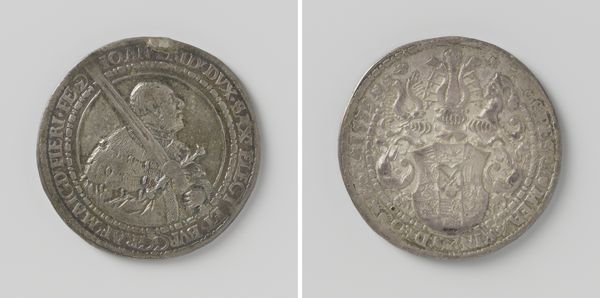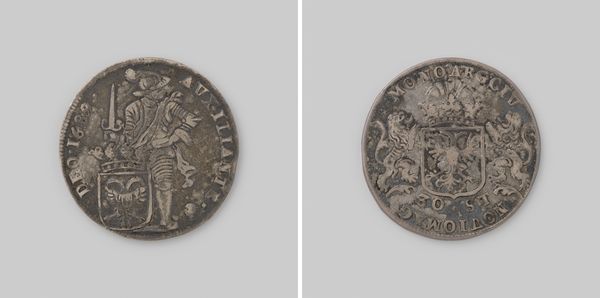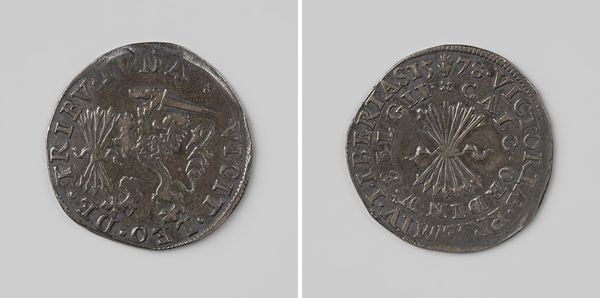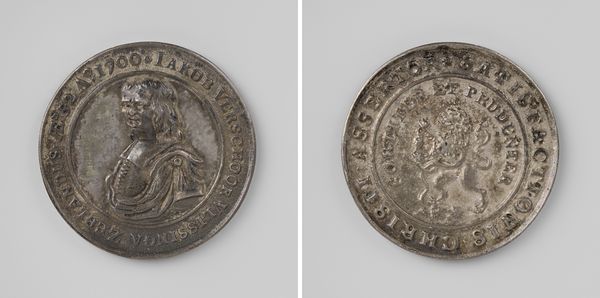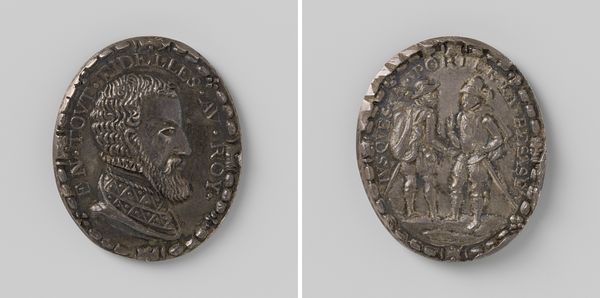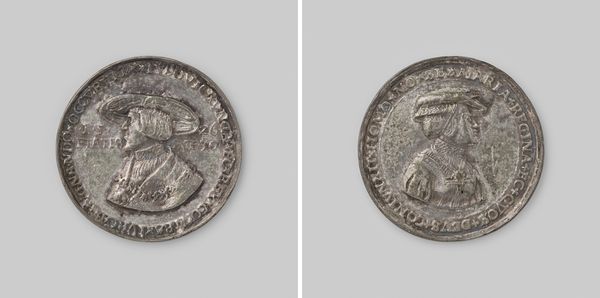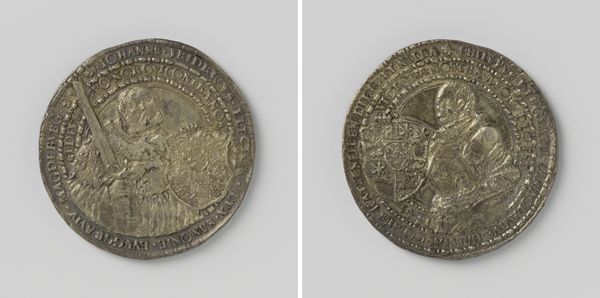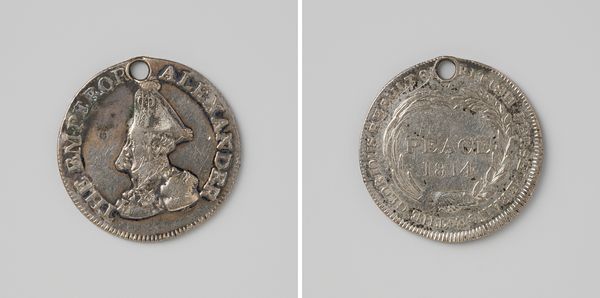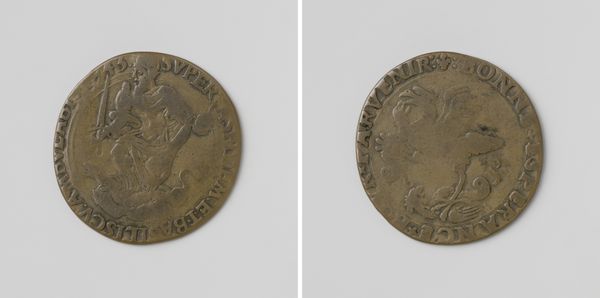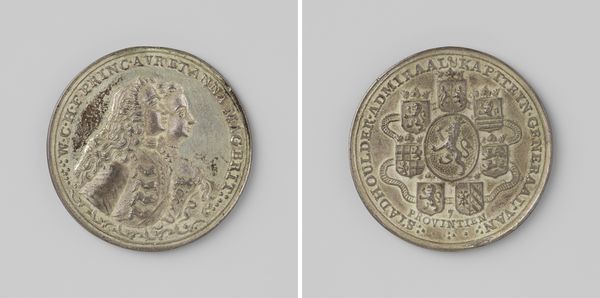
Dimensions: diameter 4.5 cm, weight 26.54 gr
Copyright: Rijks Museum: Open Domain
Editor: Here we have a metal relief sculpture, a portrait of "Albert, hertog van Beieren," created by an anonymous artist in 1507. It's currently held at the Rijksmuseum. I'm immediately struck by the details achievable in metal at that time. How would you interpret the artistic decisions and materials in this piece? Curator: Well, let's think about what a metal relief portrait meant in 1507. It wasn’t just a pretty picture. Consider the production. Crafting this from metal, likely silver or a similar precious material, signaled wealth and power. This object speaks volumes about the Duke's desire to be perceived as a strong, enduring ruler. Editor: So, the very material becomes a symbol of status and permanence? Curator: Exactly! And the relief format is important. Unlike a painting, this is tactile. People would have handled this, felt the weight and the coldness of the metal. It’s an object to be possessed, circulated, a very tangible assertion of power. Editor: That makes me think about the role of labor in creating the piece, and how that’s invisible when we just consider the portrait itself. Curator: Precisely. The skill and time required to produce such a piece were significant investments, showcasing not only Albert's wealth but also the skilled craftsmanship available in his realm. How might circulation and value operate in this society, using craftsmanship to validate currency and social standing? Editor: It gives a completely different perspective to consider art in relation to material and economic conditions. Curator: Indeed, it’s not just about aesthetics, but about the entire system of production and consumption that supports it.
Comments
No comments
Be the first to comment and join the conversation on the ultimate creative platform.

